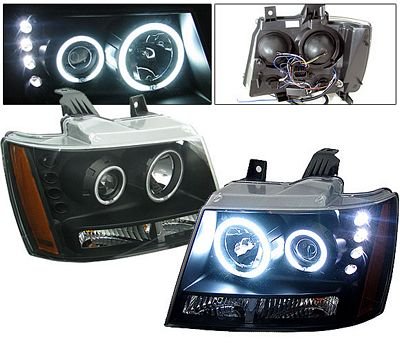Sup!
Fair warning, the following will be tldr for some, but I thought it would be useful to have a lighting and HID information thread for folks to refer to before deciding on a course of action.
Before I begin, a few caveats …
1. This is all the information I have learned through my experiences going from stock, to ebay aftermarket housings, and eventually to two retrofits (links in sig), plus all the research I have done, and from reading on hid planet.com for over a year.
2. There's a lot more that i don't know, and I am by no means an 'expert' … for example I know nothing of wiring/harnessing nor do I know how to physically install a retrofit, although I have observed quite a few being created.
3. I'm not going to get into a convo about how you never get flashed with your PnP kit in your reflector housings. First of all glaring everywhere isn't the same as having your high beams on, some people get flashed some don't. As it will become clear, getting flashed is but one of many reasons not to use PnP kits.
4. ALL modifications to OEM stock lighting, except for replacing like for like specified bulbs, are illegal … that goes for the person sporting a 20000K PnP kit to the person with a properly installed $1500 retrofit with full oem hardware. The only difference is that the latter is less likely to draw any more attention to itself than any other oem housing.
5. Some of this info is specific to NNBS trucks, some is applicable to all vehicles.
That noted …
So you hear of this thing called High Intensity Discharge lighting, you look in the mirror, you say to yourself "I'm a high intensity kinda guy, that sounds like something I ought to pimp" … it's understandable, and it's good marketing, after all if it were called Lethargic Bulb Syndrome there'd hardly be a need for this thread and our eyes would likely be spared from tens of thousands of cheap Chinese kits on the road.
Here's some basic information that one should take the time to read through:
http://www.danielsternlighting.com/tech/bulbs/Hid/conversions/conversions.html
http://www.hidplanet.com/forums/showthread.php?44158-HID-plug-n-play-fails-govt-test
http://www.hidretrofits.com/
The hardware specific information on the last link is somewhat outdated as there now are more projector, bulb, and shroud options … I will get into this in a bit.
Your stock halogen setup:
Yuck, it's soooo feeble and boring!
Actually not really.
What many folks don't realize, is the amount of technology/R&D that goes into designing and creating halogen headlamps and how intricate and complicated they really are. As opposed to HID lighting, halogen lighting has been decades in development, thoroughly tested, and car manufacturers have a firm grasp on its capacities and limitations. One might think that it is a simple task of having a reflector and slapping a bulb into it, but a great deal more than that has gone into it in order to create a light that is both highly functional for the driver and minimizes adverse consequences for surrounding traffic. Every little flute on the lens or dimple on the reflector has a well defined purpose.
Every halogen housing is designed to work with its specific halogen bulb because differently designated halogen bulbs are never the same bulb with just a different base. Some bulbs like H11 have shields at their tips, some like the H13 don't and solely rely on a cap in the headlight housing itself … but bottom line, H designated bulbs are not interchangeable, they each have their optical characteristics meant to complement the housing in which they are meant to reside, especially those that are low beam only.
Low beam halogen bulbs, as opposed to HID bulbs, project light by reflecting it backwards onto the reflector inside the housing, which in turn projects the light forward in front of the vehicle. This will of course be the fundamental reason discussed later as to why HID bulbs are both inefficient and egregious in halogen reflector housings.
As far as your options to improve the stock bulbs that come on your truck, depending on what you define as 'improve,' you have a few options.
There are many oem spec aftermarket bulbs by companies such as Sylvania/Osram, Hella/Optilux, Philips, etc, that will improve output intensity over stock bulbs. Not by much mind you because parameters are set by wattage requirements and by the inherent limitations of the technology itself. Keep in mind that much of this is a zero sum equation, meaning that if you increase something on one end something gets sacrificed on the other. In this case, by keeping all the DOT/OEM specs consistent, the price one pays for getting a bulb which puts out more lumens, is usually shorter bulb life.
Some define 'improved output' as a whiter light. Halogen bulbs within required specs cannot burn white and they will always have the yellowish hue. The way manufacturers make them illuminate whiter is by coating the bulbs in different shades of blue. This is somewhat effective in making the light whiter but the blue coating will decrease lumens … again, it's that zero sum thing.
So the best aftermarket non coated bulbs will increase intensity but keep color the same as oem, the blue coated ones will make the like whiter but any increase in output will likely be lost through the coating. So as noted, it really depends on what 'improved' means to you.
There are 'over-wattage off road' aftermarket halogen bulbs available. I don't know much about them, but they will obviously exceed lumen/glare restrictions, and my understanding is that they may have damaging consequences to the housing, socket, and harness due to the higher heat they generate.
One last note about halogen lighting …
Halogen lighting is easier on the eyes, especially on long drives. It has much better ambient lighting characteristics as the light will 'bleed' over a much larger area, as opposed to HID lighting which is highly focused and has very little 'bleed' over the cutoff. Halogen color temperature is close to optimal for night sight and for eye stress, hence why most oem HID color specs try to emulate this temperature. This is why more people that one would think (especially commercial drivers, older drivers, and drivers with sensitive eyes), actually prefer halogen illumination over HID.
OEM Halogen Projectors
OEM halogen projectors are a relatively new technology. They are implemented because they can give car manufacturers the freedom to design more attractive and smaller housings (often emulating HID housings), whilst keeping halogen illumination. However despite the exterior similarities to HID projectors, they are specifically designed with halogen optics in mind, including how they disperse the light, heat tolerances inside the projector/harness/socket, etc.
The only advantage in owning a vehicle which came with such a setup is that a halogen projector is likely (but not sure) to be easier to swap for an HID one in the course of a retrofit.
Putting an HID bulb in a halogen projector is not likely to have adverse consequences to surrounding traffic, it'll most likely result in poor output and may damage the housing components.
Which brings us to …
Fair warning, the following will be tldr for some, but I thought it would be useful to have a lighting and HID information thread for folks to refer to before deciding on a course of action.
Before I begin, a few caveats …
1. This is all the information I have learned through my experiences going from stock, to ebay aftermarket housings, and eventually to two retrofits (links in sig), plus all the research I have done, and from reading on hid planet.com for over a year.
2. There's a lot more that i don't know, and I am by no means an 'expert' … for example I know nothing of wiring/harnessing nor do I know how to physically install a retrofit, although I have observed quite a few being created.
3. I'm not going to get into a convo about how you never get flashed with your PnP kit in your reflector housings. First of all glaring everywhere isn't the same as having your high beams on, some people get flashed some don't. As it will become clear, getting flashed is but one of many reasons not to use PnP kits.
4. ALL modifications to OEM stock lighting, except for replacing like for like specified bulbs, are illegal … that goes for the person sporting a 20000K PnP kit to the person with a properly installed $1500 retrofit with full oem hardware. The only difference is that the latter is less likely to draw any more attention to itself than any other oem housing.
5. Some of this info is specific to NNBS trucks, some is applicable to all vehicles.
That noted …
So you hear of this thing called High Intensity Discharge lighting, you look in the mirror, you say to yourself "I'm a high intensity kinda guy, that sounds like something I ought to pimp" … it's understandable, and it's good marketing, after all if it were called Lethargic Bulb Syndrome there'd hardly be a need for this thread and our eyes would likely be spared from tens of thousands of cheap Chinese kits on the road.
Here's some basic information that one should take the time to read through:
http://www.danielsternlighting.com/tech/bulbs/Hid/conversions/conversions.html
http://www.hidplanet.com/forums/showthread.php?44158-HID-plug-n-play-fails-govt-test
http://www.hidretrofits.com/
The hardware specific information on the last link is somewhat outdated as there now are more projector, bulb, and shroud options … I will get into this in a bit.
Your stock halogen setup:
Yuck, it's soooo feeble and boring!
Actually not really.
What many folks don't realize, is the amount of technology/R&D that goes into designing and creating halogen headlamps and how intricate and complicated they really are. As opposed to HID lighting, halogen lighting has been decades in development, thoroughly tested, and car manufacturers have a firm grasp on its capacities and limitations. One might think that it is a simple task of having a reflector and slapping a bulb into it, but a great deal more than that has gone into it in order to create a light that is both highly functional for the driver and minimizes adverse consequences for surrounding traffic. Every little flute on the lens or dimple on the reflector has a well defined purpose.
Every halogen housing is designed to work with its specific halogen bulb because differently designated halogen bulbs are never the same bulb with just a different base. Some bulbs like H11 have shields at their tips, some like the H13 don't and solely rely on a cap in the headlight housing itself … but bottom line, H designated bulbs are not interchangeable, they each have their optical characteristics meant to complement the housing in which they are meant to reside, especially those that are low beam only.
Low beam halogen bulbs, as opposed to HID bulbs, project light by reflecting it backwards onto the reflector inside the housing, which in turn projects the light forward in front of the vehicle. This will of course be the fundamental reason discussed later as to why HID bulbs are both inefficient and egregious in halogen reflector housings.
As far as your options to improve the stock bulbs that come on your truck, depending on what you define as 'improve,' you have a few options.
There are many oem spec aftermarket bulbs by companies such as Sylvania/Osram, Hella/Optilux, Philips, etc, that will improve output intensity over stock bulbs. Not by much mind you because parameters are set by wattage requirements and by the inherent limitations of the technology itself. Keep in mind that much of this is a zero sum equation, meaning that if you increase something on one end something gets sacrificed on the other. In this case, by keeping all the DOT/OEM specs consistent, the price one pays for getting a bulb which puts out more lumens, is usually shorter bulb life.
Some define 'improved output' as a whiter light. Halogen bulbs within required specs cannot burn white and they will always have the yellowish hue. The way manufacturers make them illuminate whiter is by coating the bulbs in different shades of blue. This is somewhat effective in making the light whiter but the blue coating will decrease lumens … again, it's that zero sum thing.
So the best aftermarket non coated bulbs will increase intensity but keep color the same as oem, the blue coated ones will make the like whiter but any increase in output will likely be lost through the coating. So as noted, it really depends on what 'improved' means to you.
There are 'over-wattage off road' aftermarket halogen bulbs available. I don't know much about them, but they will obviously exceed lumen/glare restrictions, and my understanding is that they may have damaging consequences to the housing, socket, and harness due to the higher heat they generate.
One last note about halogen lighting …
Halogen lighting is easier on the eyes, especially on long drives. It has much better ambient lighting characteristics as the light will 'bleed' over a much larger area, as opposed to HID lighting which is highly focused and has very little 'bleed' over the cutoff. Halogen color temperature is close to optimal for night sight and for eye stress, hence why most oem HID color specs try to emulate this temperature. This is why more people that one would think (especially commercial drivers, older drivers, and drivers with sensitive eyes), actually prefer halogen illumination over HID.
OEM Halogen Projectors
OEM halogen projectors are a relatively new technology. They are implemented because they can give car manufacturers the freedom to design more attractive and smaller housings (often emulating HID housings), whilst keeping halogen illumination. However despite the exterior similarities to HID projectors, they are specifically designed with halogen optics in mind, including how they disperse the light, heat tolerances inside the projector/harness/socket, etc.
The only advantage in owning a vehicle which came with such a setup is that a halogen projector is likely (but not sure) to be easier to swap for an HID one in the course of a retrofit.
Putting an HID bulb in a halogen projector is not likely to have adverse consequences to surrounding traffic, it'll most likely result in poor output and may damage the housing components.
Which brings us to …







